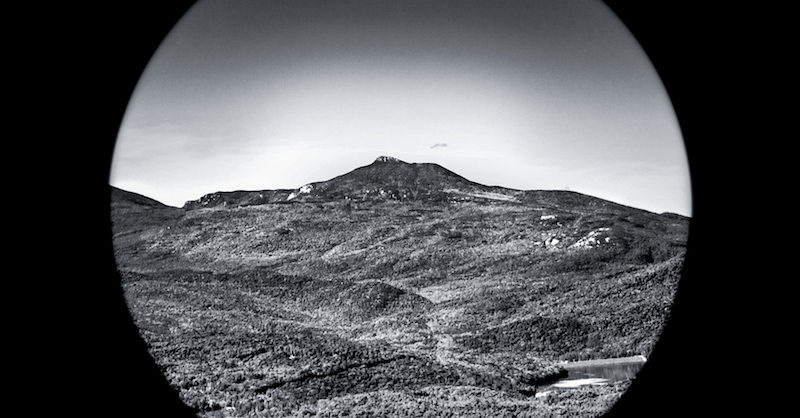The Call of Upward
What makes us want to climb Camel’s Hump, or any other high point on the horizon?
BY LEATH TONINO
The poet Gary Snyder, a prodigious traveler, says that when he approaches a new place, whether that’s the city of Kyoto or some vast desert, he immediately (usually within a day of arrival) searches out the height of land.
To get his bearings? Yes, of course; the bird’s-eye-view some craggy prominence affords is akin to the perspective provided by a map. But perhaps this practice of “getting high” offers more than just a sweet panorama? Perhaps the destination is, as the cliché goes, less important than the journey? Perhaps it’s the walk (or tram ride or bicycle ride or elevator ride) that, in combination with the vista, makes this such an intoxicating obsession?
For as long as I can remember, my travels have been characterized by semi-conscious, semi-entranced journeys upward. It’s almost as though a weird kind of reverse-gravity works over my body, pulling me through crowded streets, forested glens, you name it, until the final frontier (open sky) rests atop the crown of my head like a baseball cap. On a 12-hour layover in Hong Kong, I found myself sweatily ascending Victoria Peak by random jungle paths. Visiting Montreal one cold weekend, Mount Royal’s steep flank warmed my numb toes. Edinburgh was Arthur’s Seat. Colorado was 14,439-foot Mt. Elbert. The list goes on.
But here’s the thing, the wonderful thing: It’s easy to spy a lofty destination, yet generally quite difficult to set the flag of oneself in the sought-after soil. An unfamiliar urban grid, a labyrinth of wilderness canyons—these territories we love to explore are complex, intricate, only too willing to spin our butts dizzy. They ask for random adventure, for ten thousand steps, each step drinking This Place up through the soda-straw legs, into the beating heart and confused mind. While the big view does indeed orient us, it strikes me that the local textures and moods encountered en route are themselves a powerful compass. What I really remember of Hong Kong are the noodles in a mysterious black sauce being sold out of alleyway kitchens. What I really remember of Mt. Elbert is a shaggy goat—his white fleece, his blazing eyes.
Whatever the call of upward is all about, one thing I can say for certain is that it begins with a specific, particular up. In my case, the initial call was less vocal than visual—the round bluish hump of a mountainous camel out there on the horizon. I remember toddling around the backyard, gazing past fields of stubble corn and rumpled foothills, my attention transfixed by Vermont’s third-highest peak. It was only a matter of time before my chubby little legs got to work and made happen an ascent of Camel’s Hump.
Well, actually, it’s more accurate to say that my father’s legs made it happen, and that I rode along on his back, hardly breaking a sweat. I use the word “hardly” because beneath the summit block, where the Long Trail traverses a narrow ledge, my father set me down for my first tactile encounter with alpine terrain. I was maybe four, maybe not even, and that ledge’s grim exposure (a five-foot drop that appeared as a 500-foot drop) did indeed get me perspiring. It also sealed the deal. Upward, you are my boss, my lord. Command me where thou wisheth!
Over the past three decades I’ve been commanded again and again. And again. The tiptop of a white pine. The crown of a sandstone dome. The touristy apex—Twin Peaks—of San Francisco. Why do we want that view so bad? What happens when we seek it out, when we’re en route? How do these explorations stamp our memories?
Honestly, despite that quasi-theory I proposed a few paragraphs back—the idea that what we’re really after is the effort of bumbling upwards and the resultant sense of place—I can’t claim that my wanderings have led me to any answers, to any clear thoughts on the subject. Rather, they have led me to rarefied perches, to improbable pinnacles, to heights around the globe, Camel’s Hump and beyond.
Passion begets passion, I guess. Upward leads to more upward, always more upward. This is where I have arrived, and it is also where I am going, and it is also where I have been. That’s answer enough for me.
Contributing editor Leath Tonino is the author of the recently-published The Animal One Thousand Miles Long, a collection of essays about his travels across Vermont.



Pingback: Vermont Sports Magazine, October 2018 - Vermont Sports Magazine